Don't miss interesting news
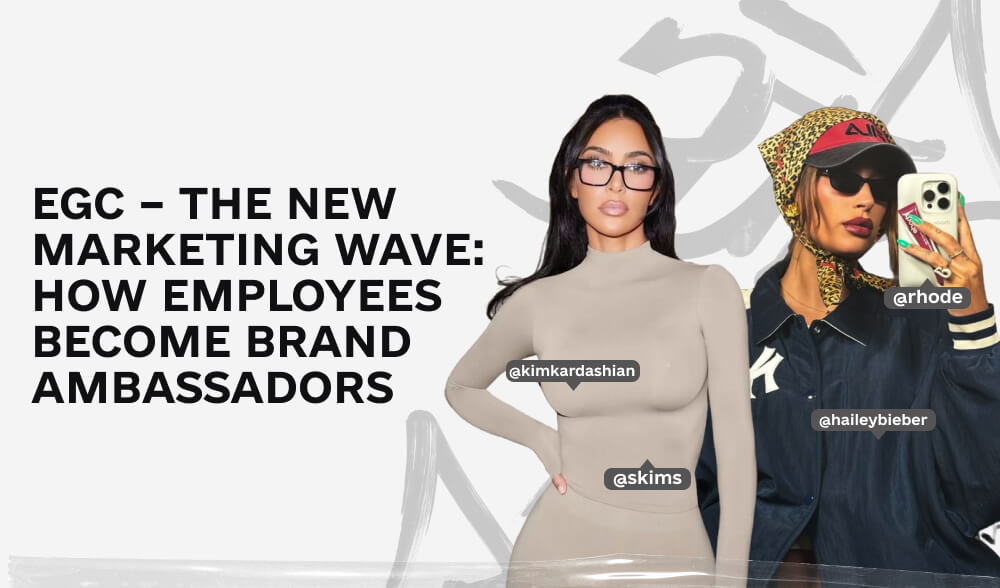
The world of marketing is changing rapidly, and brands are looking for new ways to gain the trust of their audience. One of the most powerful trends in 2025 is Employee-Generated Content (EGC), or content created by company employees. This is not just corporate materials, but an authentic view from the inside, which gives customers the opportunity to see the brand through the eyes of its team. The concept of such content helps to increase the level of audience trust, as people trust real employees more than professional advertising models/hired actors.
EGC includes:
That’s why the impact of EGC on marketing strategies is huge:
Content from real employees looks much more authentic than standard advertising.
Social media is better at promoting personalized content created by real people than branded advertising.
Content created by employees is shared through their personal profiles, which increases brand reach.
Involving employees in content creation helps them to become more involved in the life of the company.
Potential employees see real stories and want to join the team.
Companies receive high-quality content without the need for significant costs for creating professional advertising.
Such content creates a more human image of the brand, increases trust, and attracts potential customers organically. In 2025, this approach is gaining even more popularity as the audience wants to see real stories instead of idealized advertising images. Also, people understand that a company that values and provides conditions for its employees’ media activity has nothing to hide and everything is transparent.
Successful EGC is based on reinforcing and directly creating genuine enthusiasm among employees. Sometimes it happens by accident due to the employee’s sincere desire, and it’s great when managers don’t miss this opportunity to agree on a format of cooperation where everyone benefits. However, more and more companies are now encouraging their employees to share content on their own, backing it up with tangible image components. To increase employee engagement, companies organize internal initiatives that create a real community atmosphere and reduce employee fears and complexes.
Many people confuse EGC with UGC (User-Generated Content) and official branded content, but these are completely different concepts, although they all have almost identical goals. The main difference is that UGC is content created by regular customers, while EGC is created by internal employees. Here are the key differences:
| Parameter | EGC (employee-generated content) | UGC (user-generated content) | Branded content |
| Authors | Employees of the company | Customers, bloggers. | Marketing department |
| Authenticity | High | High, but depends on the brand | Moderate |
| Brand control | Partial | Minimal | Full |
| Format | Posts, videos, case studies | Reviews, posts, videos | Official advertising |
EGC occupies the golden mean between trust and control, as it is both authentic, has room for creativity, and is created by people who know the business from the inside. Unlike conventional advertising, which has a clear commercial connotation, content from employees is perceived as a more honest feedback from like-minded people.
Over time, all the old methods of promotion simply become less relevant, because our society is in a time of media saturation and information noise. It’s no wonder that people get tired of “licked” images and excessive idealization of a product/brand. That’s why artificial advertising is being replaced by user-generated content that is easier to understand:
Employee-generated content plays a key role in building a positive company image. Real human stories are more sincere and understandable than advertising slogans. Also, if employees share their work experience, talk about projects and the atmosphere in the company, it increases the trust of customers and partners. This greatly contributes to the personalization of the brand in the eyes of the audience. It is worth striving to become “familiar and close in spirit” among hundreds of similar competitors.
EGC helps not only in external communication, but also in strengthening the corporate spirit. Employees who are actively involved in content creation feel more involved in the life of the company and their contribution. This increases their motivation, promotes their professional development, and builds their loyalty. It is also beneficial for the company because such employees are likely to work longer and be loyal to requests.
In addition to the benefits mentioned above, involving employees in content creation has another huge bonus – it can significantly reduce the cost of advertising campaigns. Instead of investing large budgets in video production, actors, and copywriters, a company can cut down on it and use authentic content created by its own employees. This is not only cost-effective, but also works more effectively to build audience trust and strengthen internal company relations.
The implementation of EGC requires a comprehensive approach and a certain motivational regulation so that employees see the real rewards they can receive. It’s important not just to encourage employees to create content, but to make it part of a corporate strategy that will really motivate people, because this strategy will not work if it’s forced. Also, over time, employees may feel that they are not being used purely to save money, so praise and bonus rewards should be present in a high-quality long-term EGC strategy.
Of course, for the effective implementation of EGC, it is necessary to train the team in basic content creation skills. These can be courses/intensives on the following topics:
Don’t forget that the distribution of content is no less important than its creation. The company should have a strategy of EGC publications on social media. To do this, you can do the following:
These are just some of the options, and each company has to create an optimal plan and conditions for its development in this direction if it wants to move forward in a new way.
In order for employees to be actively involved in content creation, the company can support:
Both in Ukraine and abroad, some brands are already actively involved in this marketing direction, so you can see great results in almost all niches:
IT companies, Jysk, Prostor, etc.
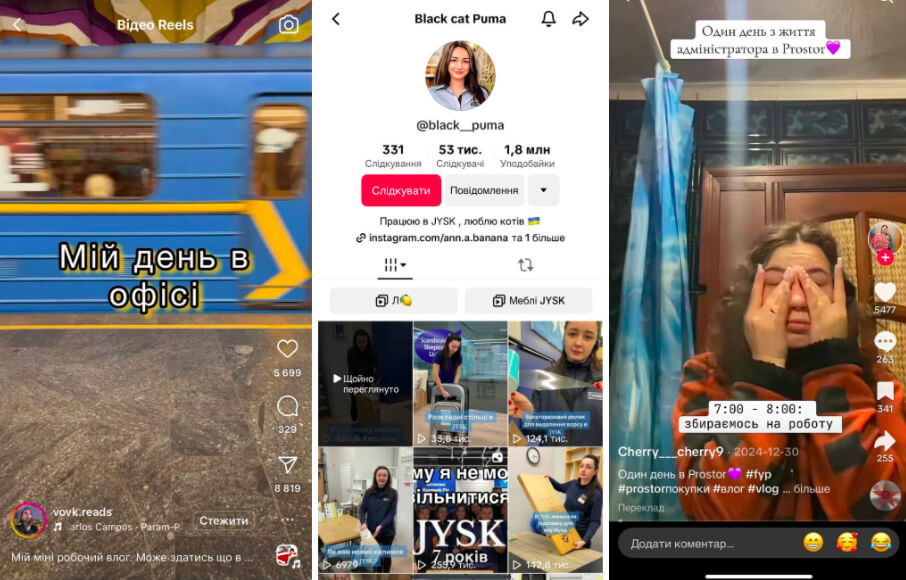
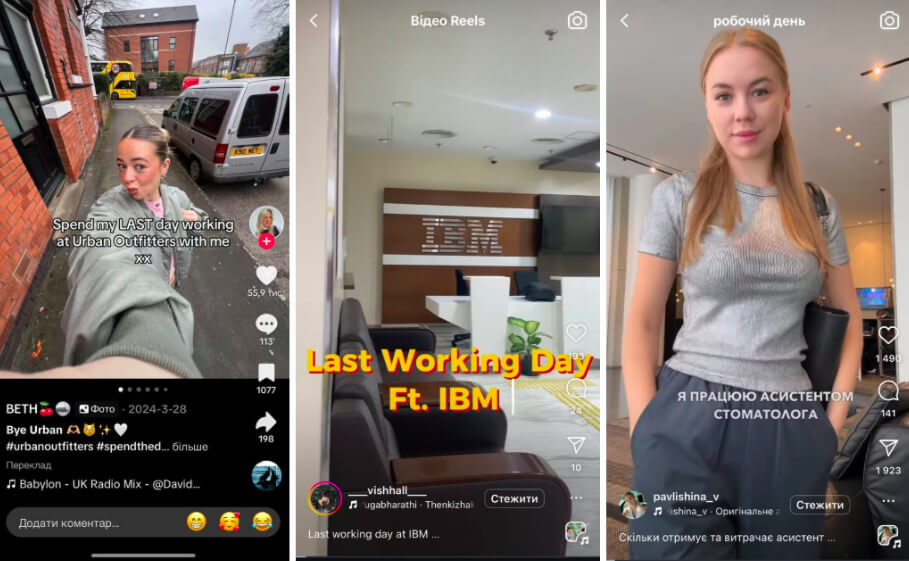
On their Instagram page, you can see posts where employees demonstrate the process of cooking, serving guests, participating in internal events, giving interviews, and creating work memes. This approach not only increases customer confidence, but also contributes to the formation of a positive image of the company.
Involving employees in content creation allows you to show the behind-the-scenes life of the restaurant, which makes the brand more transparent and attractive to the audience. Customers appreciate the opportunity to see the real people behind their favorite dishes and service, which strengthens their loyalty to the establishment.
Thus, Rebernia effectively uses the Employee-Generated Content strategy, involving its employees in creating authentic content that emphasizes the values and simplicity of the brand, speaking “in one vibe.”
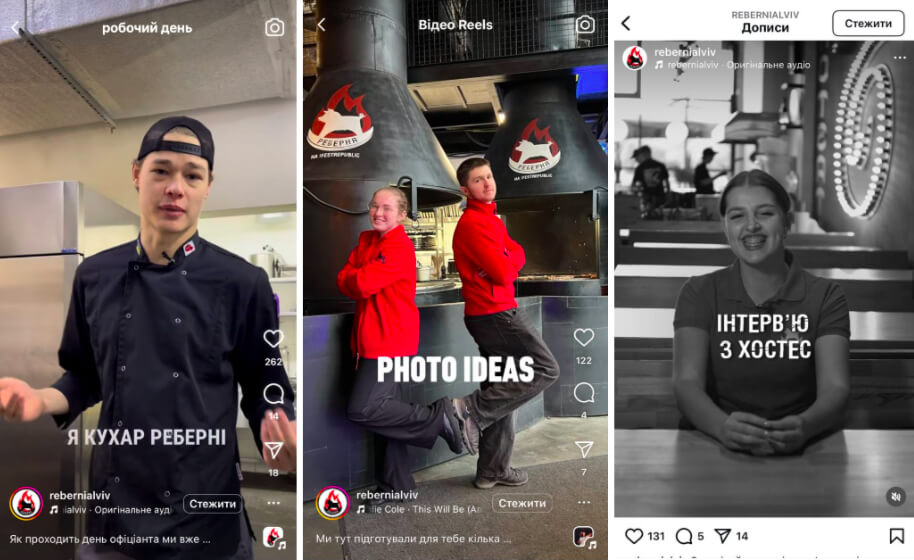
This niche is highly competitive, and most stores are not much different from each other, but not these… Thanks to their entertaining and viral content on TikTok, they gained immense popularity, outshone their competitors, and increased sales. The store owner actively involves her employees in creating and contributing to the content. This brings effective results and increases brand love not only in one city, but also makes it possible to open branches all over Ukraine through recognition.
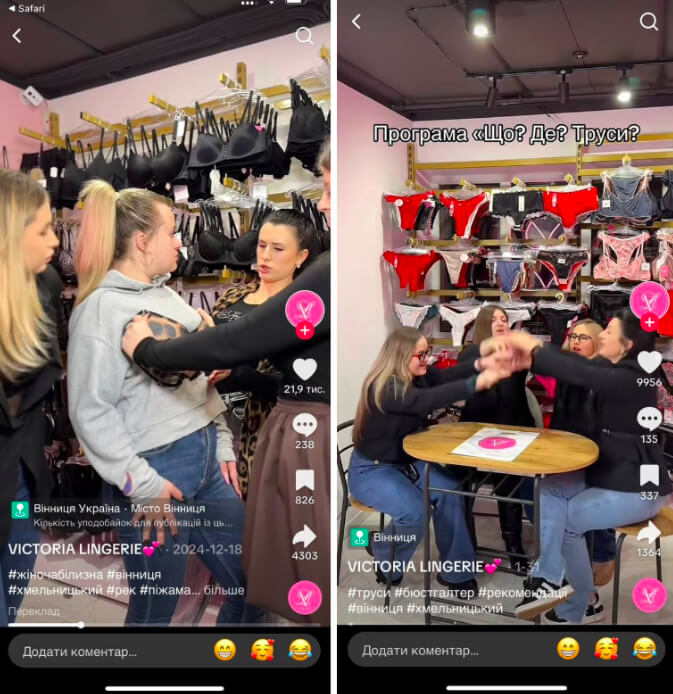
Employee-Generated Content is not just a buzzword, but a new approach to brand communication. By engaging employees in content creation, companies gain sincerity, trust, and uniqueness – exactly what modern businesses need to succeed in social media in 2025. The EGC trend is only gaining momentum, and those companies that are the first to implement it in their strategy will gain a significant competitive advantage.
In a world where users trust personal recommendations more than official advertising, EGC is becoming not just a trend, but a necessity.
Frequently asked questions about EGC
Your EGC strategy can be successful on different platforms, the main thing is to take this trend into account.